Tooth ache under the crown
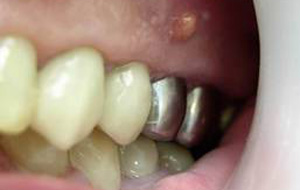
It often happens that after prosthetics, the patient notes discomfort in the oral cavity, associated with the presence of pain.
The presence of such a condition requires immediate dental intervention.
If a toothache appears under the crown, then this is an occasion to visit a doctor and undergo the necessary treatment to exclude possible complications.
Why does the tooth hurt under the crown
In most cases, before installing a dental crown, teeth are pulped. Subsequently, the tooth structure is fixed to the dead tooth.
If a nerve has not been removed before tooth replacement, then in the presence of insufficiently treated caries, inflammation of the nerve (pulpitis) may develop.
In the event that a depulped tooth hurts, it may be a question of inflammation of the periodontium or gums.
The causes of pain can be several:
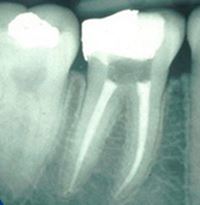
- Inadequate preparation of teeth for prosthetics. Poorly filled cavity and root canals.
- If a pin was installed, then the possibility of perforation of the root canal is not excluded.
- The absence of a snug fit of the crown to the surface of the tooth and gum, which indicates poor installation of the denture.
- Debris entering the root canal.
- Damage or wear to the crown.
Poor tooth preparation
Before prosthetics, in most cases, teeth are pulped, followed by root canal filling.
Canal filling is carried out according to certain standards, the implementation of which prevents the formation of an inflammatory process.
The inflammatory process can develop both with incomplete filling of the canals to the apex of the root, and with insufficiently tight filling, with the presence of voids.
Poor installation
In case of incomplete adherence of the crown to the tooth, wear and damage to the prosthesis, residues of food particles can accumulate between the tooth surface and the gum, which contributes to the favorable reproduction of pathogenic microflora.
As a result, the inflammatory process and secondary caries begin to develop, leading to tooth decay and decay.
Perforation of the walls of the channel
Perforation is an artificially created hole in a tooth.
Perforations may occur as a result of:
- Instrumental processing of the channel, when the expansion tool did not go along the root canal, but shifted perpendicularly and passed through the wall.
- Failure to comply with the techniques and installation of the pin in the root canal.
Breaking tool

When preparing a tooth for prosthetics during treatment of the root canal with insufficient observance of the technique of using tools by a doctor, a tool breaks down.
As a result, debris may remain in the channel, which will subsequently cause inflammation.
- This can happen if during operation in the channel the tool is turned more than 120 degrees. This is explained by the presence of channel curvature.
- If the doctor uses tools that were previously used to process the channels, this increases the risk of breaking the tool. In Europe and America, such tools are disposable and reuse is not allowed.
- With a strong curvature of the channels. In this case, there is no fault of the doctor, since the processing of such channels is risky in itself. But you still have to do it.
The whole problem is that there is practically no way to remove the chip. The presence of a fragment prevents high-quality filling, which leads to the development of the inflammatory process, as a result, a tooth aches under the crown and the gum hurts.
Signs of poor tooth preparation
According to statistics, in 60-70% of cases, this is a poor-quality preparation of the tooth for prosthetics.
Symptoms of inflammation in violation of standards in preparing the tooth for the installation of the crown:
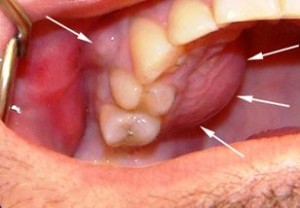
- Pain under the crown.
Hypersensitivity of the tooth and pain under the crown is associated with the presence of a purulent inflammatory focus on the apex of the root.
The formation of pus leads to pressure and bursting of tissues, causing pain.
In the case of a chronic course of the process, soreness may be absent if pressure is not applied to the tooth. When pressing on the tooth, pain appears.
- Swelling of the gums, the formation of flux under the prosthesis also indicate the presence of an inflammatory process on the apical part of the root.
In the presence of pus, pain and tooth mobility can join.
- The formation of a fistula under the crown is accompanied by swelling of the gums, cheeks and surrounding tissues, an increase in body temperature.
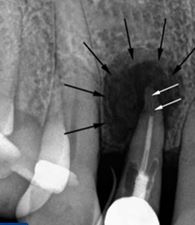
Due to the periodontal abscess, the resulting pus exerts strong pressure on the tissues, causing pain.
With weakened immunity, active pus formation occurs, which, breaking through the bone tissue and mucous membrane, enters the oral cavity.
As a result, a fistula is formed through which pus exits and can be swallowed with saliva.
Gradually, the acute phase subsides. The fistula may gradually drag out, but with weakening of the immune system inflammation develops again.
- Cyst under the crown of the tooth.
Represents an extreme degree of chronic periodontitis.
This is a cavity in the bone tissue lined with a fibrous membrane in which pus accumulates.
Symptoms of this complication are: swelling of the gums, pain when biting or pressing on the tooth.
The cyst may periodically increase in size.
Video: "How to relieve toothache"
Treatment
If you put a crown and the tooth hurts, an urgent medical attention is necessary.
Only in this case is it likely to save a tooth. Based on the x-ray taken, the doctor will be able to make the correct diagnosis and prescribe adequate treatment.
It must be remembered that if a tooth aches under the crown, then this is a serious symptom and if you do not go to the dentist and self-medicate, it is likely to miss valuable time.
How to alleviate the condition before visiting the dentist
In order to alleviate pain, dentists recommend the use of medications and non-medications.
Non-steroidal anti-inflammatory drugs are used to relieve pain.
They also have an anti-inflammatory effect.
However, the use of non-steroidal anti-inflammatory drugs (NSAIDs) for a long time is not recommended due to the increased risk of side effects.
From non-medications, it is recommended to rinse, which will not only ease the pain, but also help remove the remnants of food particles from the oral cavity.
To rinse, you can use:

- Soda solution: Dissolve 2 g of soda in 100 ml of slightly warm boiled water.
- Infusions: calendula, sage, oak bark, chamomile flowers.Pour 250 ml of boiling water over one tablespoon of dried plants and warm for fifteen minutes in a water bath.
These funds can only alleviate the condition, but can not eliminate the cause of the inflammation.
Treatment of a diseased tooth
Treatment should be carried out by a doctor.
- If the cause of the pain is developed pulpitis, then the crown will have to be removed and a course of treatment carried out. Antibiotics and anti-inflammatory therapy are usually prescribed. After the course of treatment is completely completed, a second prosthesis can be performed.
- With poor-quality filling of the channels, you will also need to remove the crown. The treatment in this case will be quite long and will last approximately two months. It is likely that the tooth will be preserved, and after treatment, the crown is reinstalled. When resecting the apex of the root, it is possible not to re-seal the channels and there is no need to remove the structure. During the operation, the surgeon, through a small hole drilled in the bone, cuts off the focus of inflammation with purulent contents. The operation saves time and eliminates other manipulations, and, which is also important: from unnecessary financial costs.
- In the presence of a flux or cyst, antibacterial and anti-inflammatory treatment is performed. It will be difficult to say whether the tooth will be preserved or not, the result will depend on its condition.
- Even if the tooth under the crown does not hurt all the time, you still need to see a doctor to prevent tooth decay. If the tooth is already rotted, then the doctor removes the crown, cleans the cavity and puts an artificial tooth in its place. This process is quite long and painful.
Only after completing the full course of treatment can you be sure that with repeated prosthetics the toothache will not return, but just in case, it is better to change the dentist to a more professional one.
Difficulties that may arise during treatment
- If the root canal was fixed with a pin, then some difficulties may arise when removing it. Such complications as perforation, root fracture and, as a consequence, tooth extraction are not excluded.
- Repeated filling of root canals is possible only after removing old fillings. Unsealing is a rather complicated procedure, often leading to root perforation.
- A problem tooth after filling requires treatment of the inflammatory focus, only after that repeated filling is performed.
Preventive measures
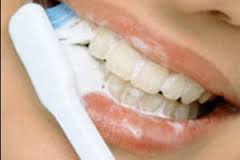
- In order to carry out prosthetics without subsequent problems, you should contact specialized clinics with qualified specialists.
- An experienced dentist controls all stages of prosthetics with x-rays. This allows to exclude such moments as loose filling of the cavity and root and incomplete filling of the canals, the possibility of perforation, as well as the presence of granulomas, cysts, etc.
- Well-established dental crowns usually last long enough that their owners sometimes forget about it. It is estimated that the life of most common crowns is approximately 5 years. Subsequently, various problems may begin associated with the wear of structures, overload, insufficient care of the crown.
- It is recommended that you visit a dentist every six months to control the condition of the prosthesis, the tooth under the crown and the surrounding gums.
- Five years after the design was installed, it would be nice to take an X-ray of the tooth in order to assess its condition.
- Proper hygienic oral care also helps prevent complications.